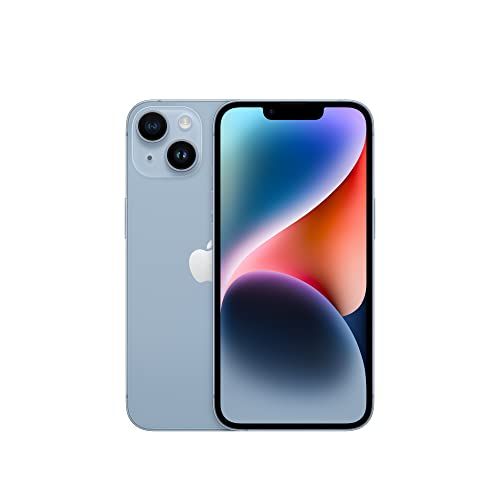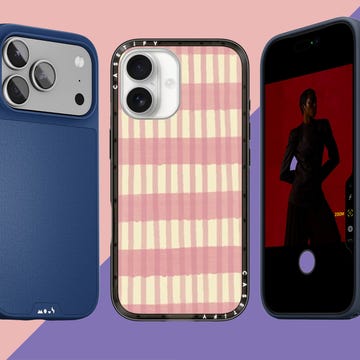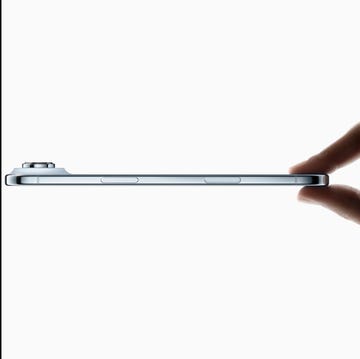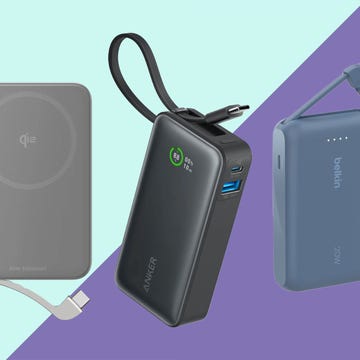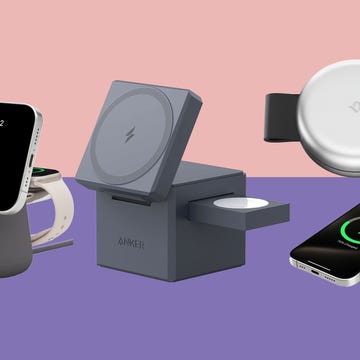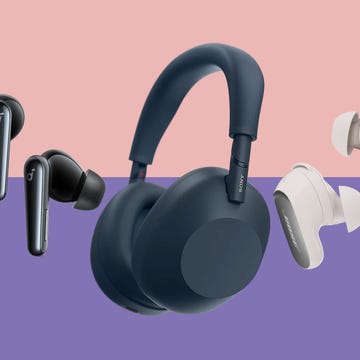Jump to:
- Is there a big difference between iPhone 13 and 14?
- Is iPhone 13 the same size as iPhone 14?
- What’s the difference between the iPhone 13 and iPhone 14 cameras?
- Does the iPhone 14 cost the same as the iPhone 13?
- Is the iPhone 14 faster than the iPhone 13?
- What colours are available?
- Is the iPhone 14 worth it compared to the iPhone 13?
- Should you buy a refurbished iPhone?
- What about the iPhone 14 Pro and 14 Pro Max?
Apple's iPhone 15 models are out now, and there's a chance that the upgraded displays, advanced cameras and USB-C tech in the iPhone 15 or iPhone 15 Pro are grabbing your attention. If so, we've got a detailed comparison of the iPhone 15 vs iPhone 14 to help with your decision.
Whether you're considering an upgrade from an iPhone 13 or are thinking about ditching your Android phone for iOS, there are big questions that are probably on your mind: is it worth buying the newest one? The one from the year before? Or is an even older iPhone still worth it?
Compared to the iPhone 13, the standard iPhone 14 promises upgrades to the front and back cameras, a “crash detection” safety feature, slightly more memory and a new “action mode” for videos to reduce shakiness. But the rest – including the display, screen, processor, water resistance and storage – is the same.
What to read next
With the iPhone 13 still widely available for lower prices, there’s a good chance that you’re wondering if you need the iPhone 14 or iPhone 15.
Perhaps you should go after an older or refurbished model, or even hold off until later in the year when new iPhones tend to come out. So, let’s break down how these two Apple smartphones compare in more detail.
Is there a big difference between iPhone 13 and 14?
The quick answer to this question is, no. There isn’t a big difference to note here. The iPhone 14 and the prior year’s model have a lot in common, coming in the same size, with the same display, the same processor and almost identical camera systems.
We think there are some reasons to go for the newer 14. It has a couple of photo and video upgrades, marginally more battery life, along with the aforementioned car crash detection for safety.
Here are the main specifications at a glance, and what remains unchanged:
- Screen size: 6.1 inches (the same on both the 13 and 14)
- Resolution: 2532 x 1170 pixels (the same on both the 13 and 14)
- Processor: Apple A15 Bionic (the same on both the 13 and 14)
- Cameras: Two rear cameras – 12MP wide-angle and 12MP ultra-wide angle – and a 12MP wide front camera (the same on both the 13 and 14, although with some small upgrades)
- Battery life: 19 hours of video playback on the 13, and 20 hours of video playback on the 14
- Storage: 128GB, 256GB, 512GB (the same options on both the 13 and 14)
- MicroSD card slot: No (the same on both the 13 and 14)
- Weight: 174g for the 13, 172g for the 14
Is iPhone 13 the same size as iPhone 14?
The 6.1-inch screen size of both phones is identical, however, the frame of the new model is just slightly thicker which, unfortunately, means that cases for the iPhone 13 can’t be re-used on the iPhone 14.
The design hasn’t been updated so you get the same build quality, button layout and notch on both phones, too. Unlike the previous two generations, there was no new version of the iPhone mini with the 14, with Apple instead offering a larger option, the 6.7-inch iPhone 14 Plus. If you're a little iPhone, the older 13 mini is still the best choice.
What’s the difference between the iPhone 13 and iPhone 14 cameras?
If you put pictures taken from these cameras side-by-side, especially if you’re looking at them on your Facebook feed or Instagram story, you’re not going to notice the difference. That isn’t because there aren’t some changes with the iPhone 14, just that they’re somewhat minor compared to the big leaps we can see in the iPhone 14 Pro.
It’s a shame that the iPhone 14 still has just two lenses on the back – a wide and an ultra-wide – compared to other more affordable smartphones and others in the same price tier that come with higher-resolution sensors for a digital zoom or a useful zoom lens on the back. This helps you get closer to your subject without moving your feet.
Which iPhone is best for selfies? That’ll be the 14, which has an upgraded front camera with a wider aperture, stabilisation and autofocus. This means it gathers more light and focuses on your face reliably. In short, that gets you better selfies, improved FaceTime calls and better video from the front lens.
On the back, there’s another slight enhancement. The main rear camera on the latest iPhone 14 now has a faster aperture and larger sensor size, essentially making this lens match the iPhone 13 Pro. Photos from the iPhone 14 are better, but it may be hard for most people to tell.
What about video? The “action mode” on the 14 is a welcome addition that stabilises judder and shakes when you’re walking or running around. It's ideal for taking videos of kids who can’t stay still or if you’re chasing your dog around the house and trying to capture it on camera. This feature isn’t on the older iPhone 13 models, so we think it’s a good selling point for the new one. On test, it worked great.
Below, we've included a gallery of photos we've taken on both the iPhone 14 and iPhone 13, to show that it's hard to see the difference between them:
Does the iPhone 14 cost the same as the iPhone 13?
At launch, despite not seeing too many major changes to the design or specs last year, Apple did raise the asking price of the iPhone 14 in the UK, adding £100 to the entry-level 128GB model. When it was released, the iPhone 14 started at £849, with a 256GB option at £959 and a 512GB at £1,179. For comparison, when the iPhone 13 was released in the UK it started from £779, with a 256GB version at £879 and a 512GB model at £1,079.
The 6.7-inch iPhone 14 Plus started at £949, the iPhone 14 Pro started at £1,099, and the iPhone 14 Pro Max – which is the most powerful of the 2022 bunch – started at £1,199. There’s no longer a mini option, but you can buy a more affordable iPhone SE, with an older design, for under £500.
Is the iPhone 14 faster than the iPhone 13?
The iPhone 14 uses Apple’s A15 Bionic chip – that’s the same highly impressive processor as the iPhone 13 Pro. Performance-wise, you won’t see or feel a difference between the two handsets.
While it caught our attention that the new model didn’t feature the same A16 Bionic chip that’s in the Pro models, on test we had no concerns about the performance, speed or efficiency of the 14.
Apps download fast and run without issues, and navigating around the menus is silky smooth. Sure, it seems like an issue on paper, but in reality, the older processor is still excellent.
What colours are available?
The colour options were slightly refreshed, with the iPhone 14 coming in midnight (black), blue, purple, starlight (white), red and yellow.
We tested a blue model of the iPhone 14 and it looks fantastic – easily standing out from the black or grey phone shades you’ll often see people holding. For comparison, the iPhone 13 has six hues: green, dark blue, pink, midnight (black), starlight (white) and red.
Is the iPhone 14 worth it compared to the iPhone 13?
We find almost every aspect of the iPhone 14 fantastic, but very little has been updated since the previous iPhone 13 and it’s a shame that the new base model doesn’t get the new A16 chip, higher refresh rate or the “Dynamic Island” tech of the iPhone 14 Pro models.
The cameras, screen and iOS 16 software on the new are all a joy to use, and the build quality feels high-end, but the same goes for its recent predecessors. The iPhone 13 is still widely available from £549, and the iPhone 12 is still available from £449. Older models are available refurbished on BackMarket too, and we highly recommend giving tech a second life. If budget is your top priority, you can also pick up the new iPhone SE for £449.
But that’s not to say the iPhone 14 doesn’t have its charms. Anyone who wants upgraded tech will find a lot to love, as will anyone who is moving over from an Android smartphone but doesn’t want to pay the £1,000+ for a Pro model. It’s also possible the iPhone 14 could see some very tempting contract deals. For us, the iPhone 14 is a good flagship, even if it’s not a completely must-have one.
Should you buy a refurbished iPhone?
The best iPhones are expensive and times are tough – we understand. If you want to keep the costs down you may want to consider buying a refurbished model via a website like BackMarket, which is listing the still-impressive iPhone 11 in excellent condition for under £300 and the 2020 iPhone SE for just under £150.
The site checks over each phone that it lists, gives you 30 days to change your mind and you get a full year’s warranty protecting against faults. It’s a great option if you’re tightening the belt. We’ve got experience buying refurbished tech, whether that’s laptops or smartwatches, and we’ve never had an issue.
Websites that sell refurbished models usually grade the handsets based on their appearance. In the case of BackMarket, the ratings go from Fair – small scratches or marks – to Excellent, where the screen is in near-perfect condition. Another popular option, Amazon Renewed, grades from Acceptable – visible scratches or marks – to Excellent, which is a phone that shows no signs of cosmetic issues from 30 centimetres away. Each platform usually has its grading system, so always double-check that you’re buying, and make sure there’s a warranty included.
What about the iPhone 14 Pro and 14 Pro Max?
If you need more power and features, you may want to consider the “Pro” handsets in the iPhone 14 lineup, the iPhone 14 Pro (which started from £1,099) and the iPhone 14 Pro Max (which started from £1,199).
Both have an extra 48MP main camera with a better zoom, plus the “Dynamic Island” technology that lets iOS apps use the new pill-shaped notch on the front to show status alerts and notifications. On test, we were impressed by how seamless it was, and now we can’t imagine not having it.
On the two Pro models, you also get a better battery life (up to 29 hours on the Pro Max compared to up to 20 hours on the standard iPhone 14) and it comes with the latest A16 chip that keeps performance silky smooth. For the first time, Apple brought in an always-on display, too. They are expensive flagships, but we reckon they’re worth it if you’ll be taking lots of photos or need more storage – the 14 Pro models both have the option of up to 1TB of built-in space.
Many of the features from the iPhone 14 Pro are now available in the standard iPhone 15, including the "Dynamic Island" and 48MP camera setup, so it's worth considering the iPhone 15 too if it's within your budget.
Jason Murdock was Hearst UK’s Deputy Technology Ecommerce Editor, contributing to multiple titles including Good Housekeeping, Esquire and Digital Spy, between 2022 and 2023.
With more than eight years’ experience covering tech at publications including Radio Times, Newsweek and the International Business Times, Jason has extensive knowledge of the latest gear and gadgets – reviewing phones, tablets, laptops, headphones, smart home products and more – and covering the biggest shopping events of the year, including Black Friday and Amazon Prime Day.
He won Digital Writer of the Year at The Drum's Online Media Awards in 2017 for his cybersecurity coverage in the International Business Times. When not writing and testing the latest gadgets, you’ll find Jason playing the guitar or learning how to parent his new baby.
Simon Cocks is Good Housekeeping UK’s Technology Editor, overseeing tech shopping content and strategy for the title. He previously also worked across other titles including Esquire UK, Digital Spy, Men’s Health UK and Women’s Health UK.
Simon specialises in testing the latest smart gadgets, home entertainment gear, headphones, speakers, portable chargers, radios, e-book readers and smartphones. He's reviewed top tech products from brands including Google, Apple, Amazon, JBL and Bose.
A magazine journalism graduate from Kingston University in 2014, Simon also worked on the Discovery and Silkroad inflight magazines. He then gained experience writing about entertainment at SFX and Total Film. He also contributed reviews and interviews to TwitchFilm (later ScreenAnarchy), CultBox and Frame Rated.
He joined Good Housekeeping UK as the Editorial Assistant for Special Projects and was part of Good Housekeeping’s Consumer Affairs Team between 2014 and 2019. In this role, he conducted price comparison research, wrote detailed household and money-saving advice guides and edited thousands of in-depth reviews for the Good Housekeeping Institute.
He has focused on technology and gadgets since 2020, where he started by testing out power banks and instant cameras. He writes reviews, roundups, news articles and deals updates, and also covers top tech deals during sales like Amazon Prime Day, Black Friday and Cyber Monday.
When not testing out the latest gizmos, you’ll find Simon either catching up with the newest releases at his local cinema or out shooting with his beloved compact camera.
You can follow Simon on Instagram, on Bluesky, on LinkedIn and on Threads.





